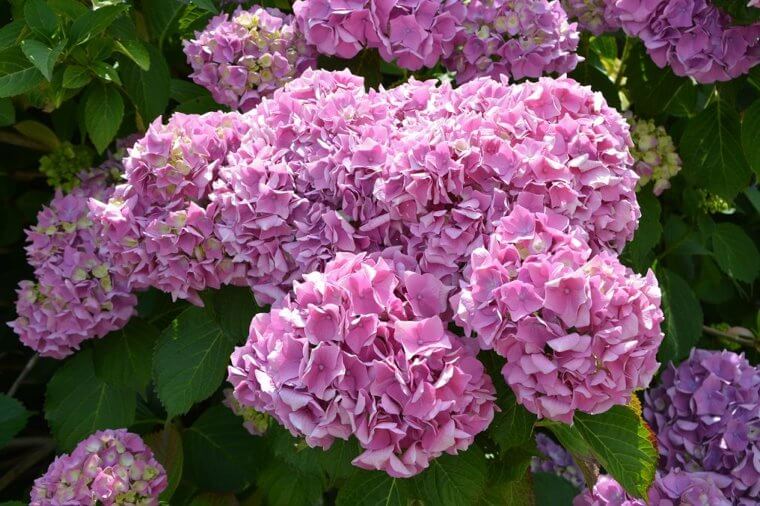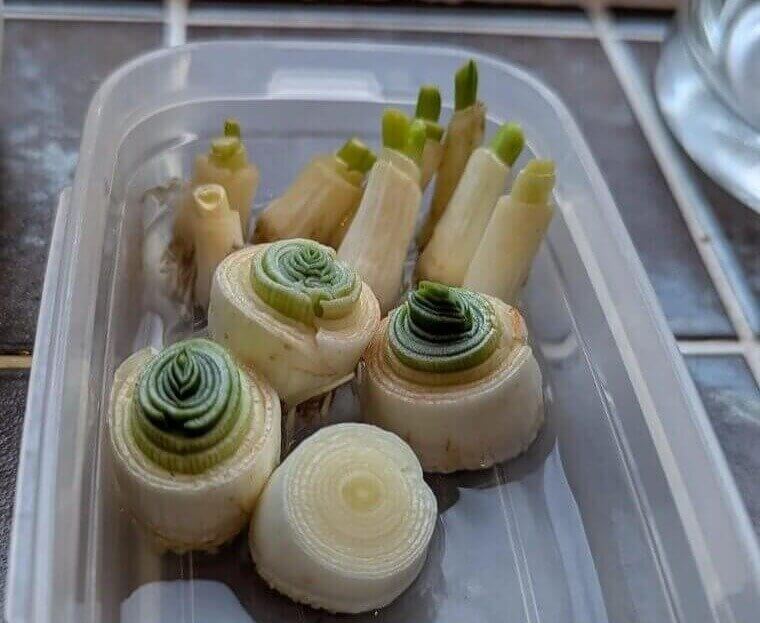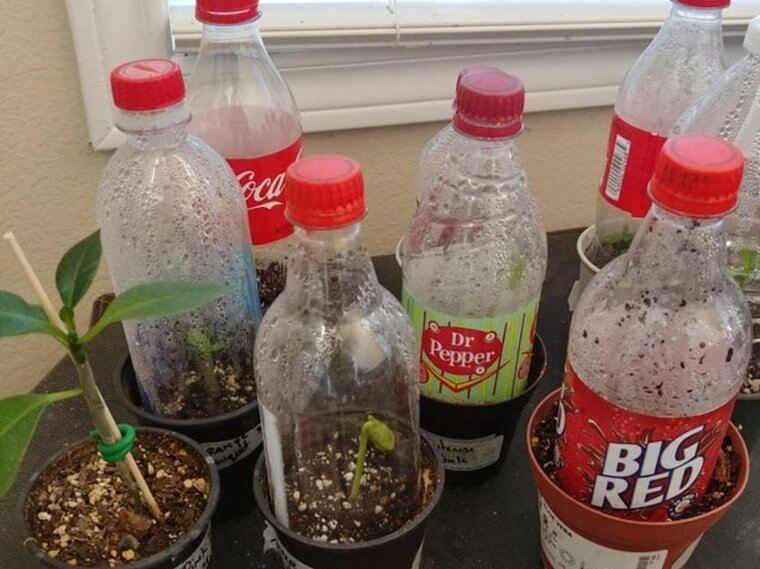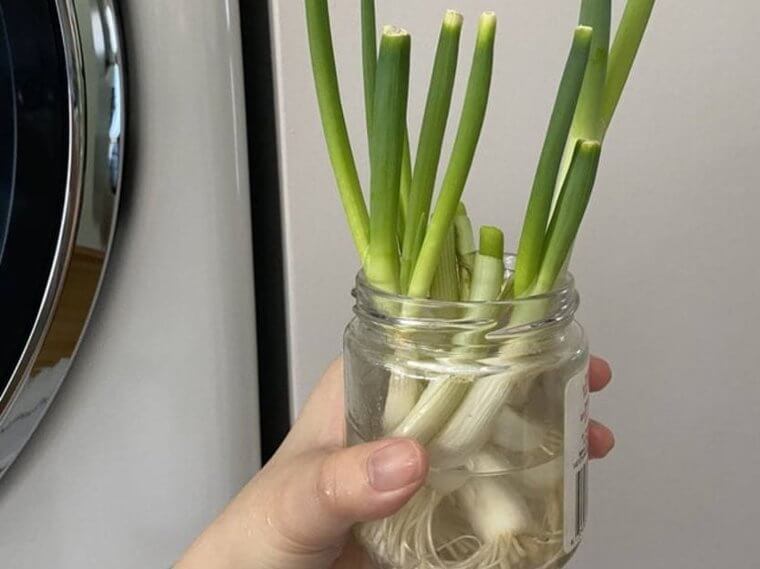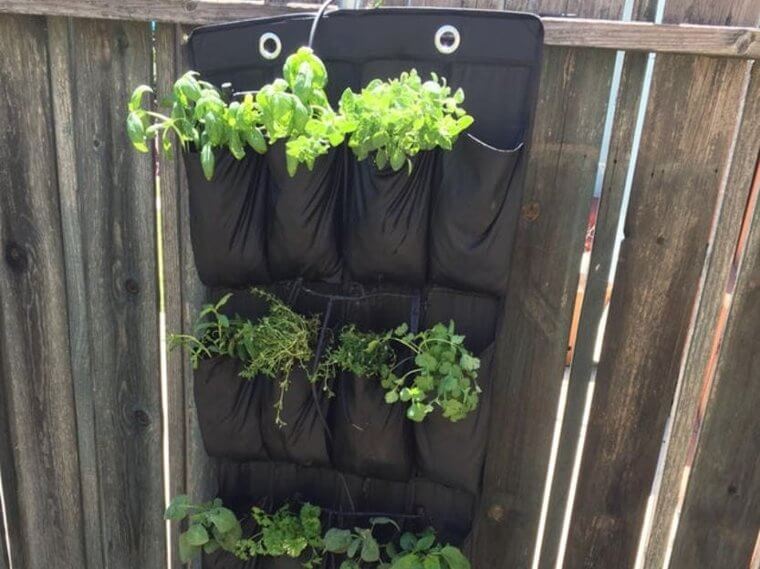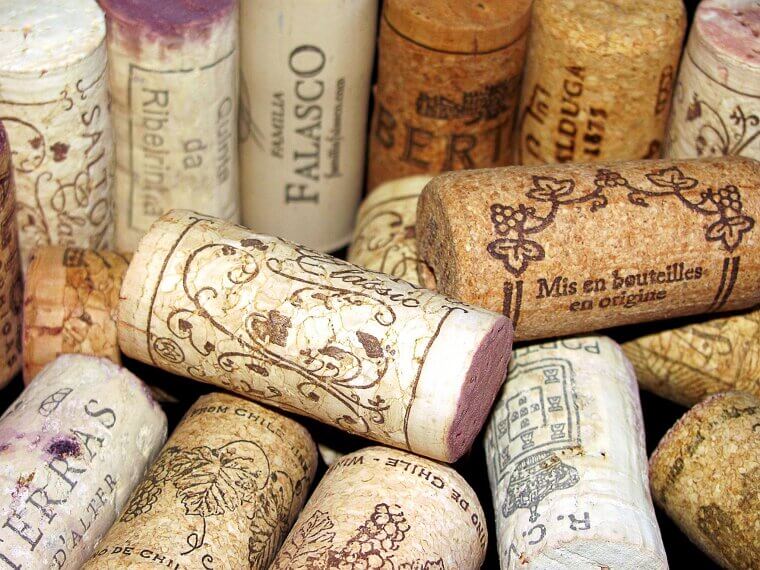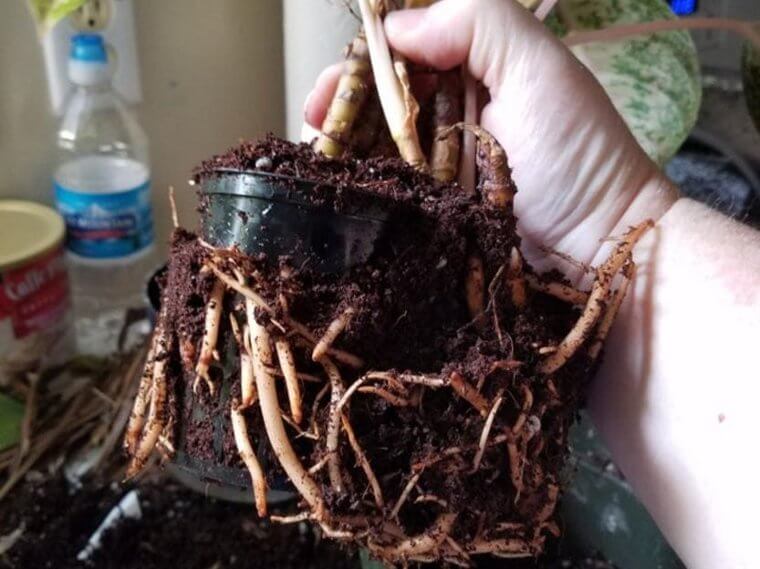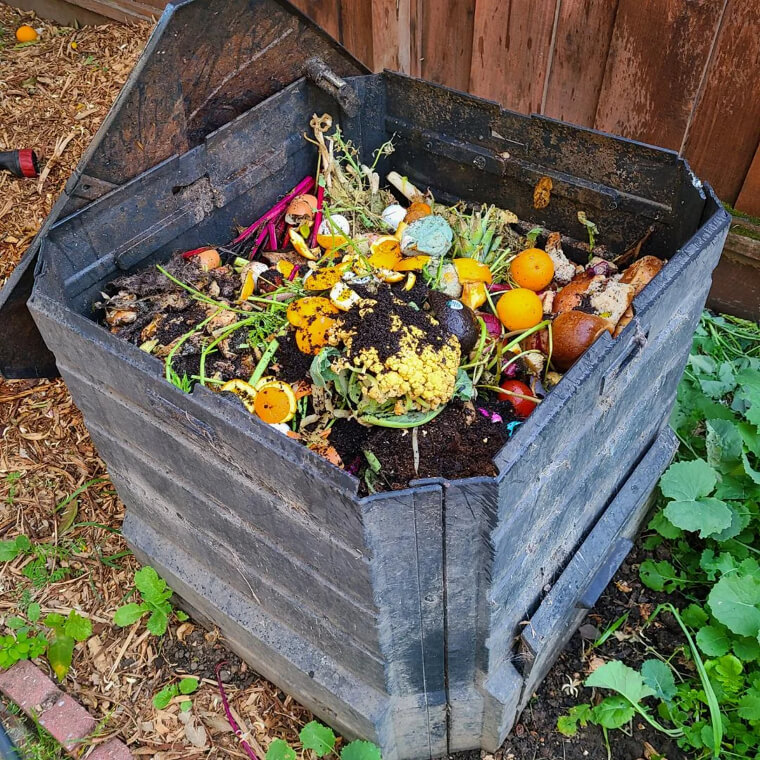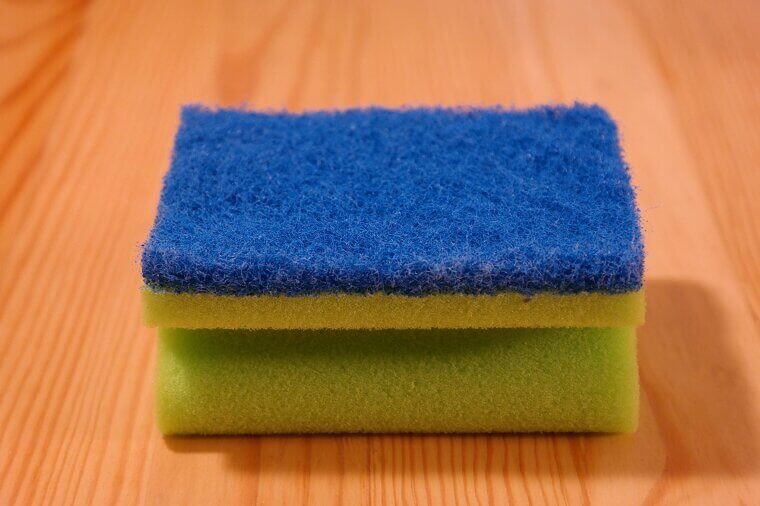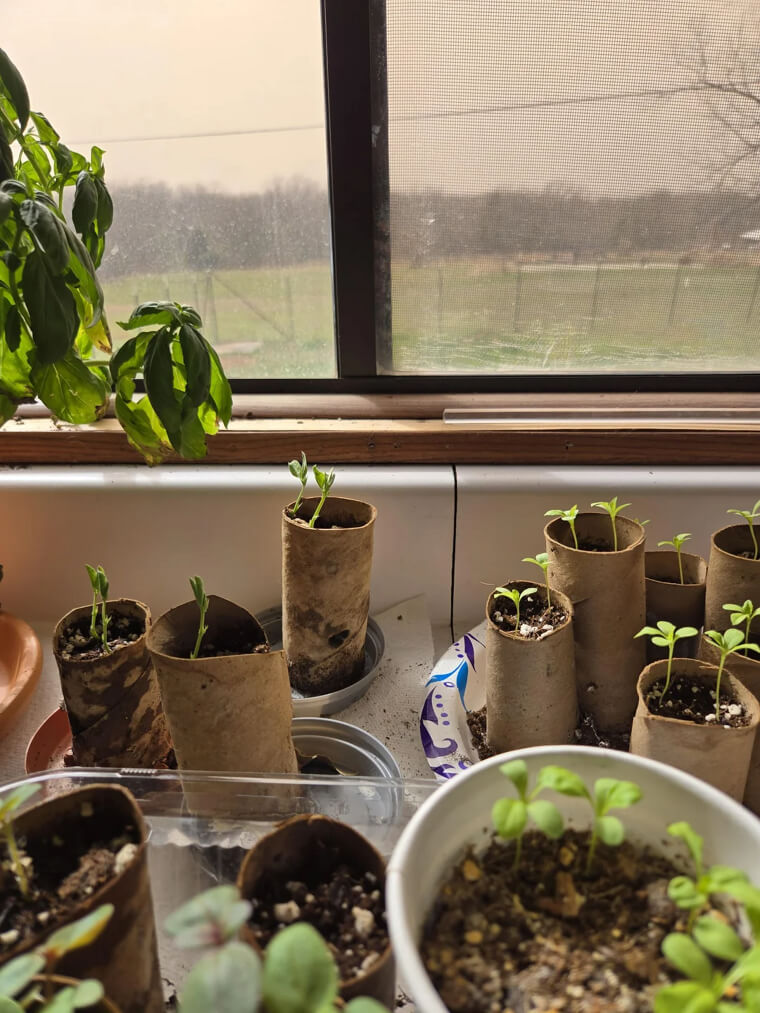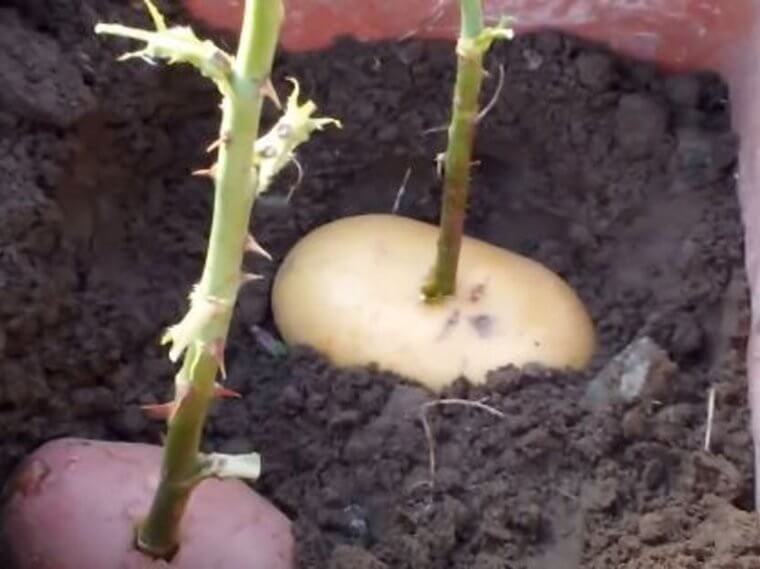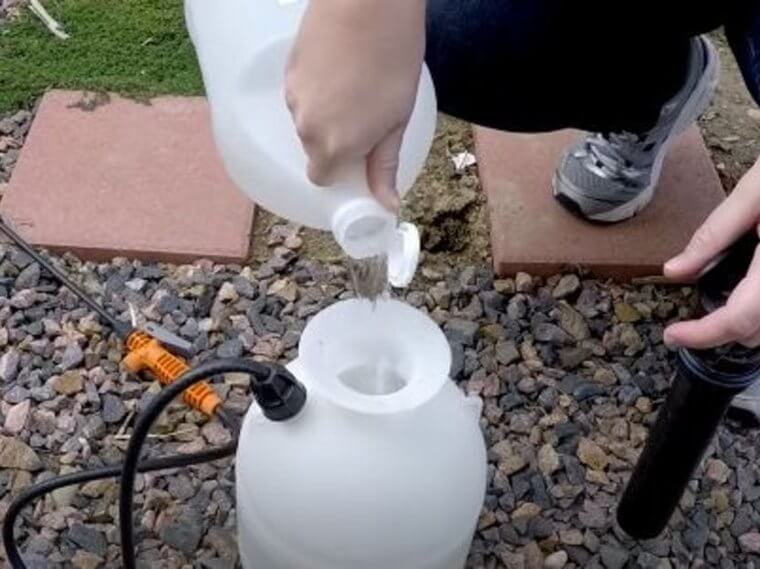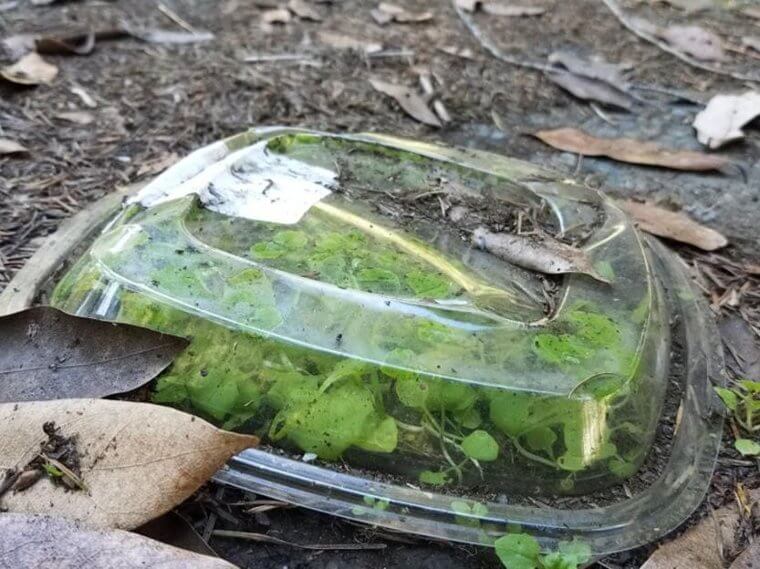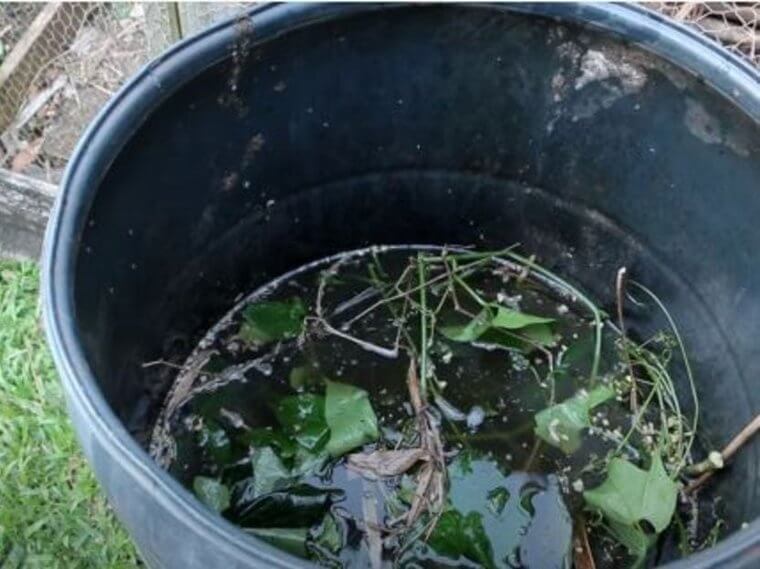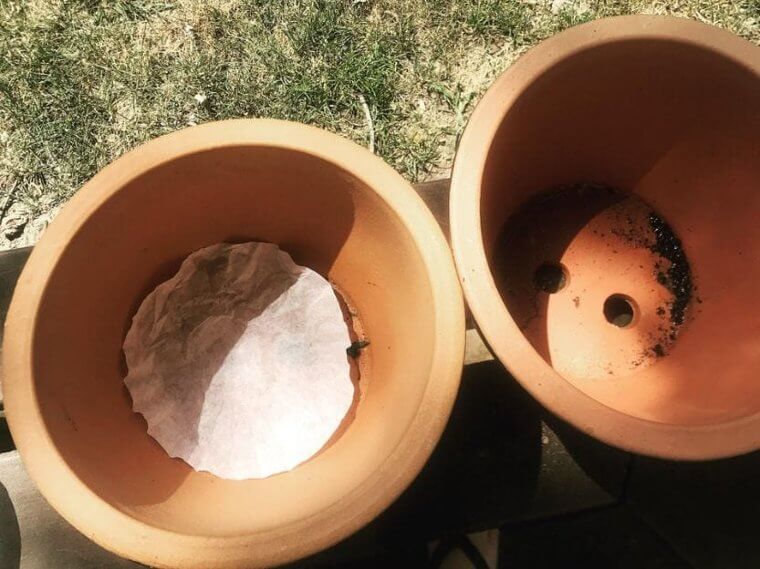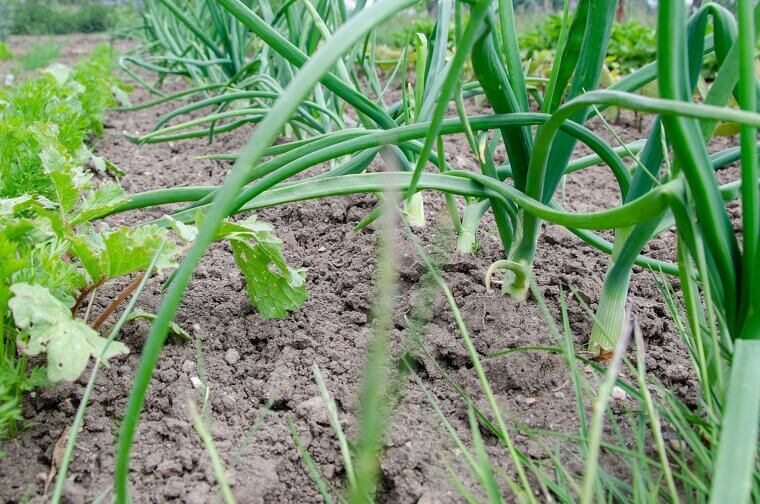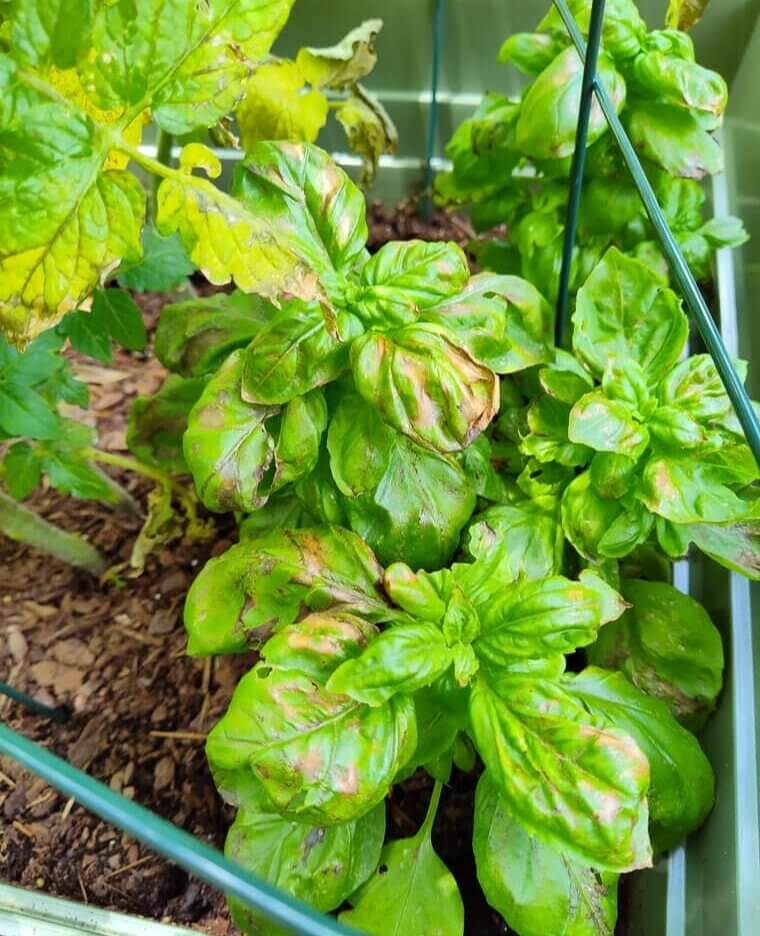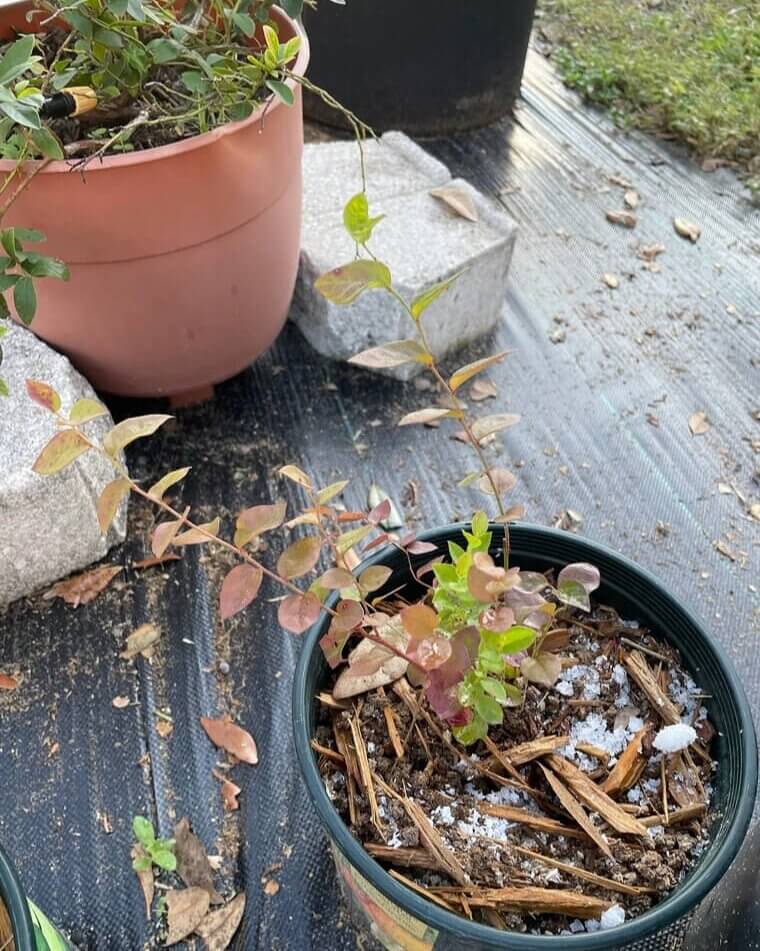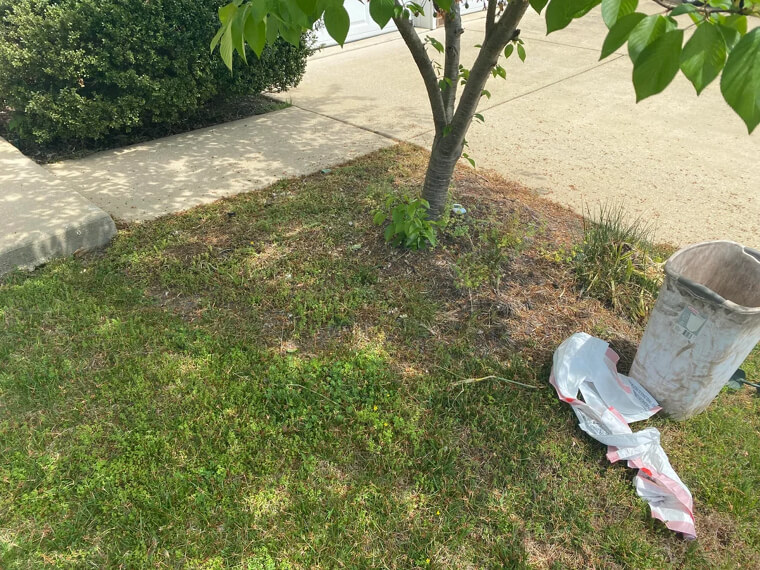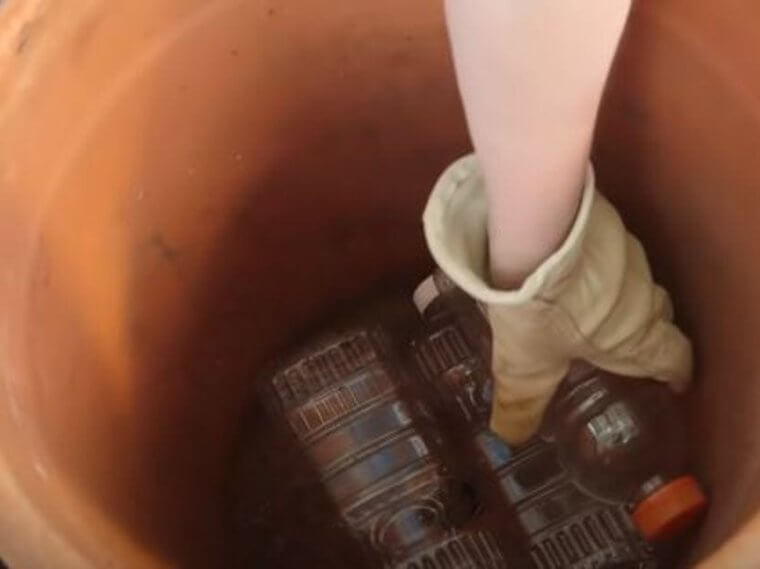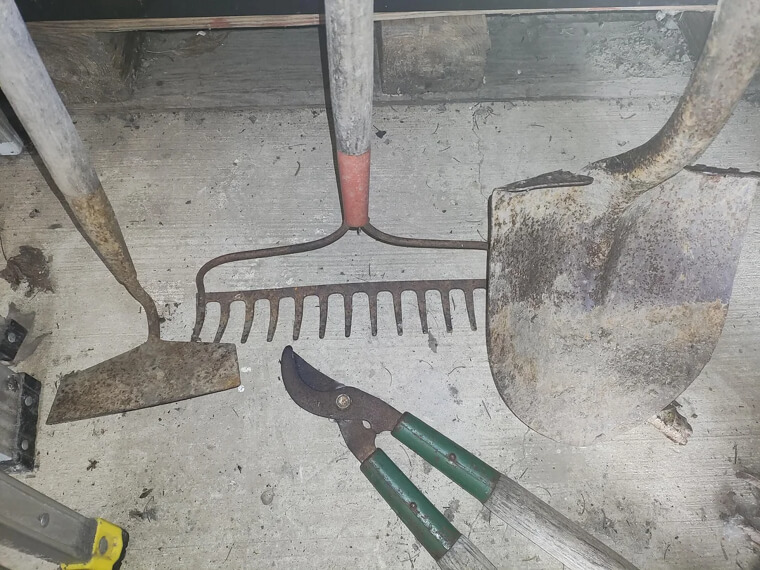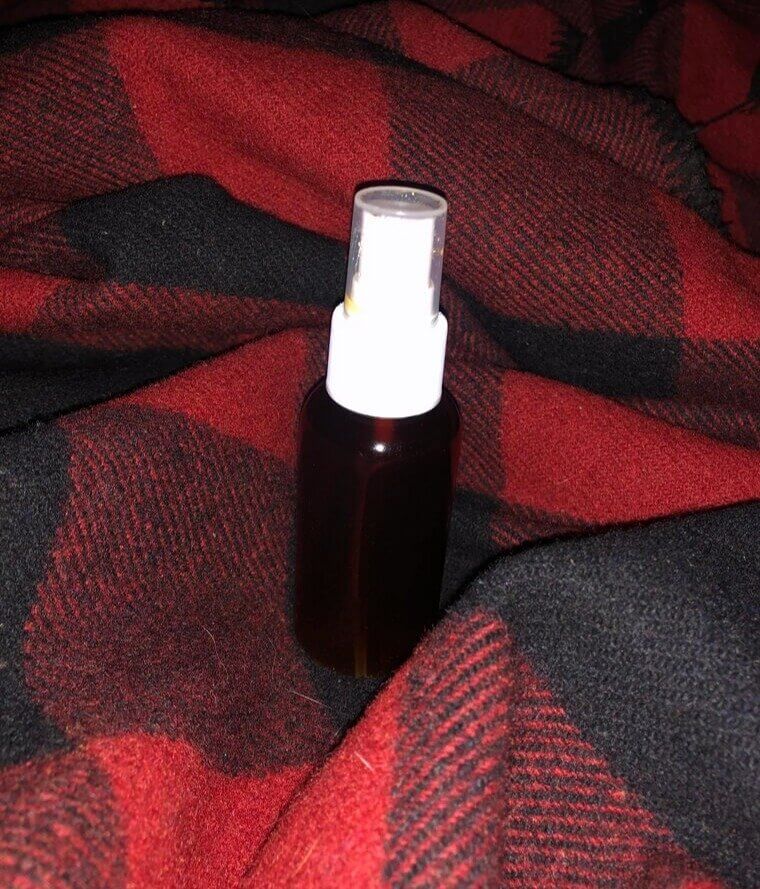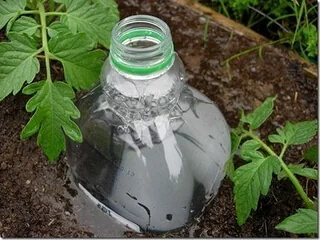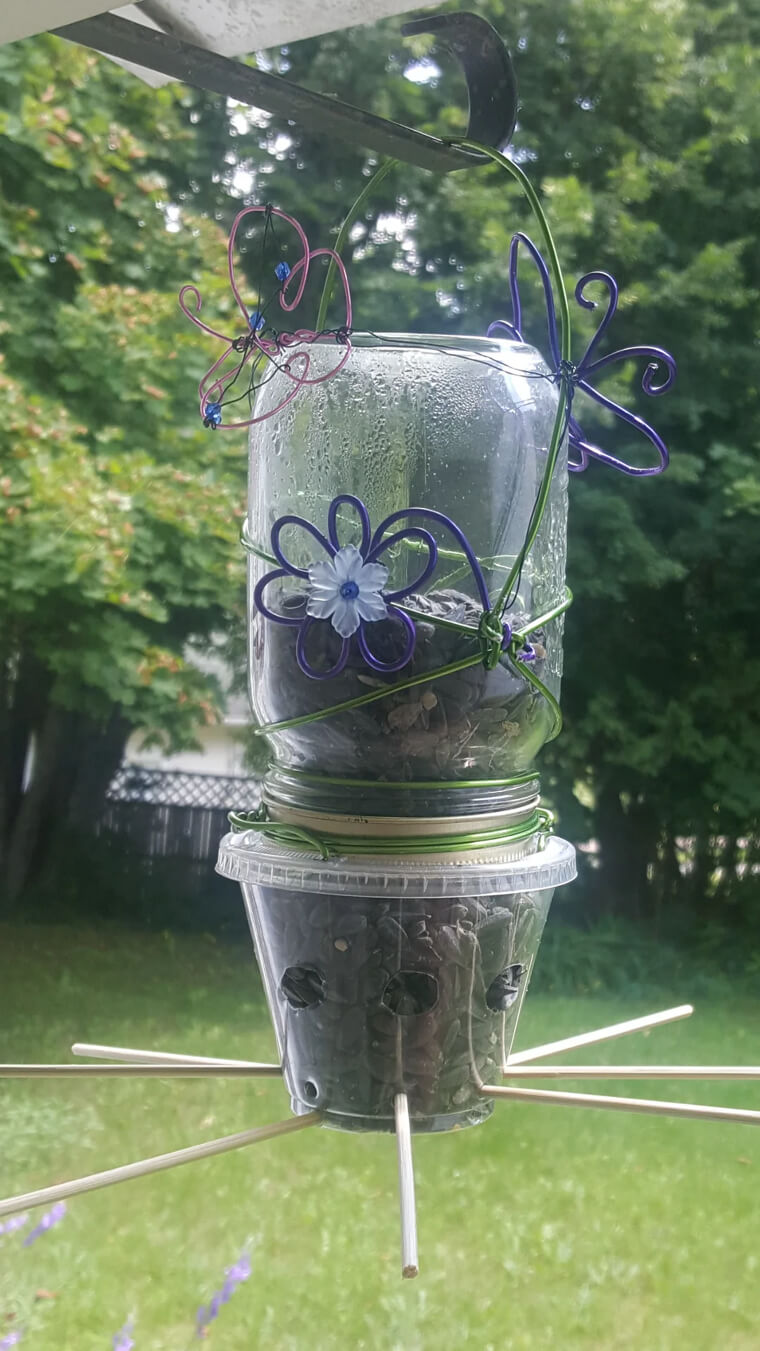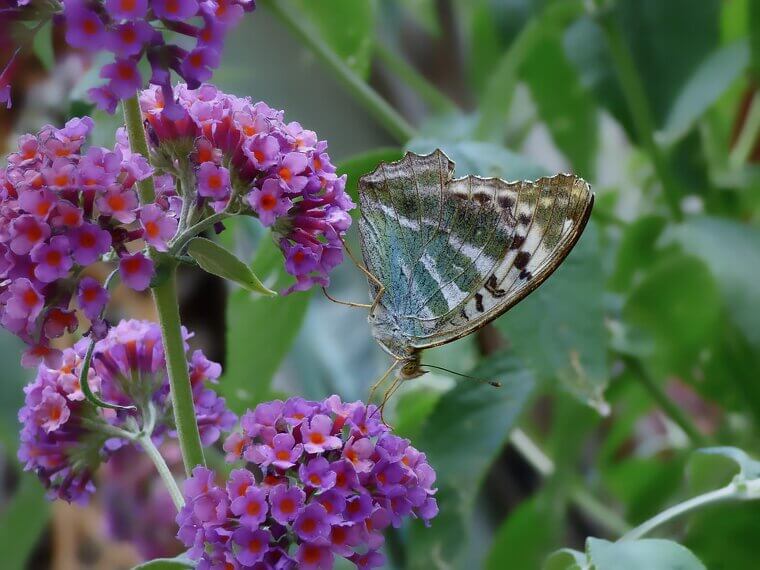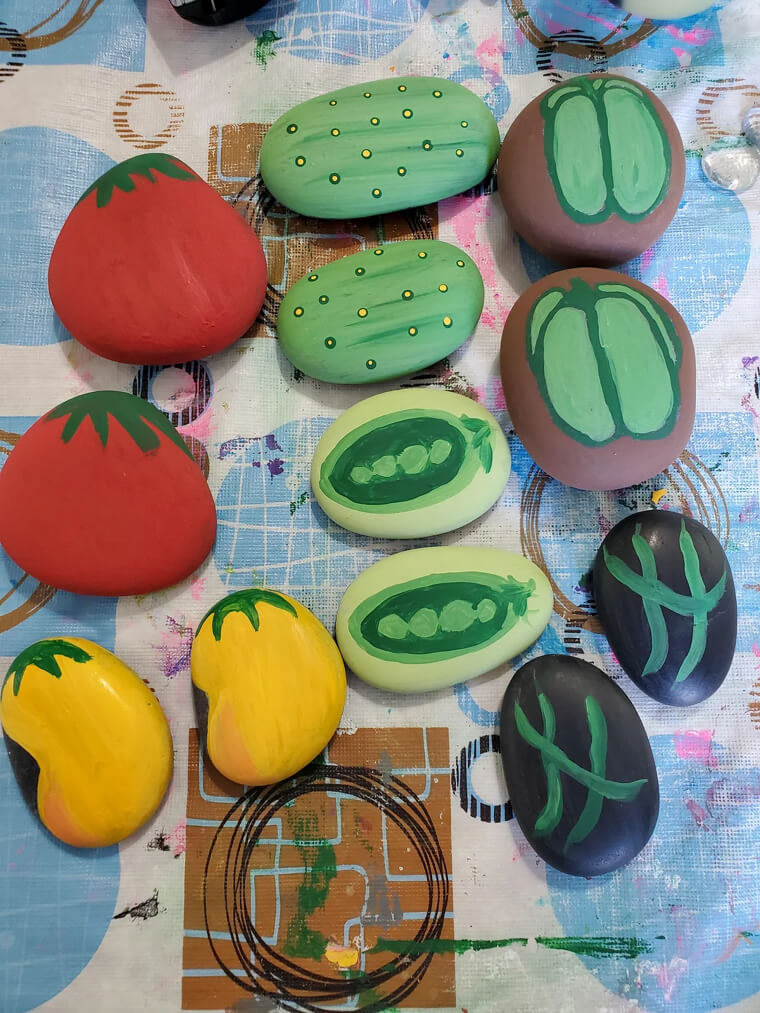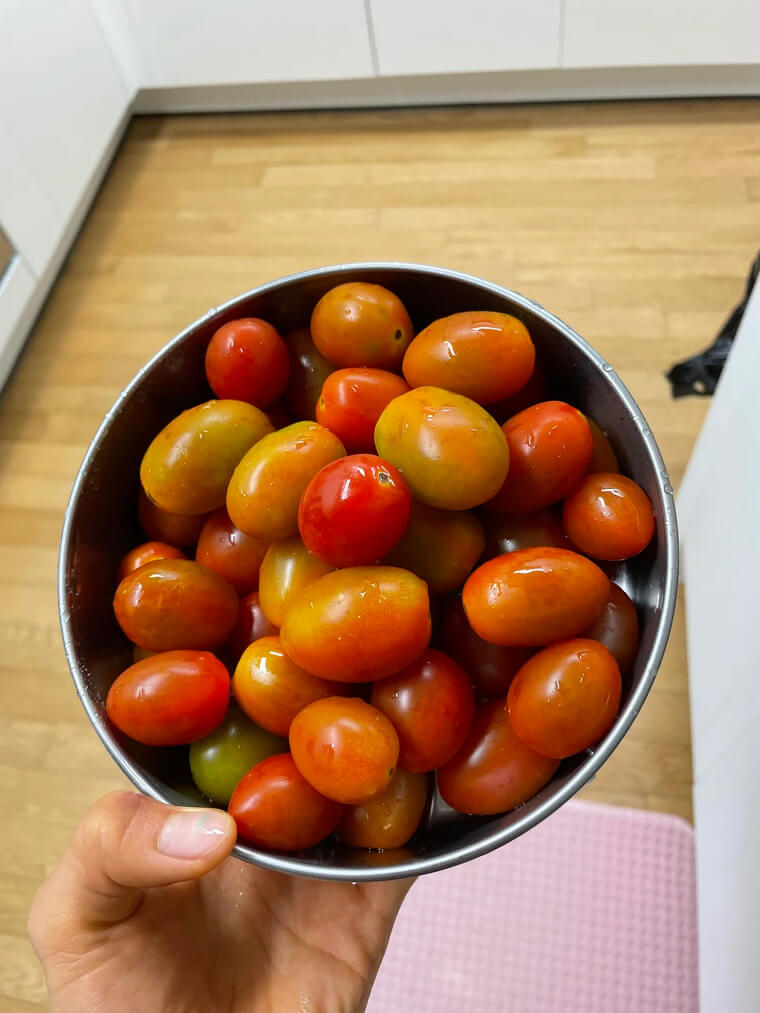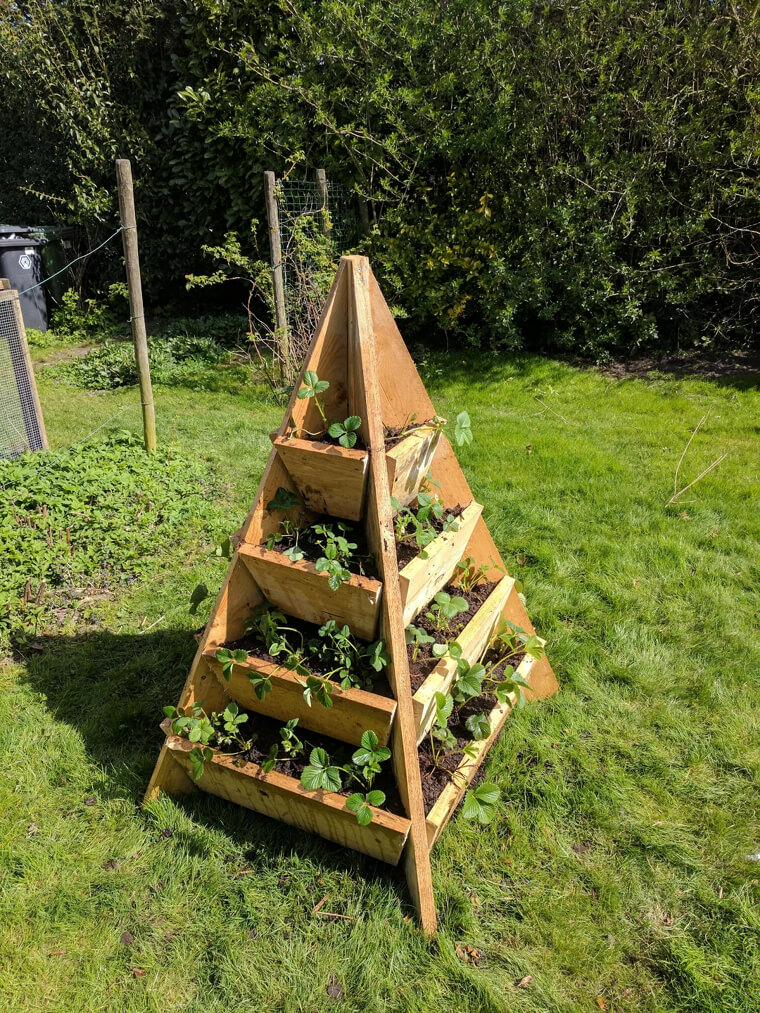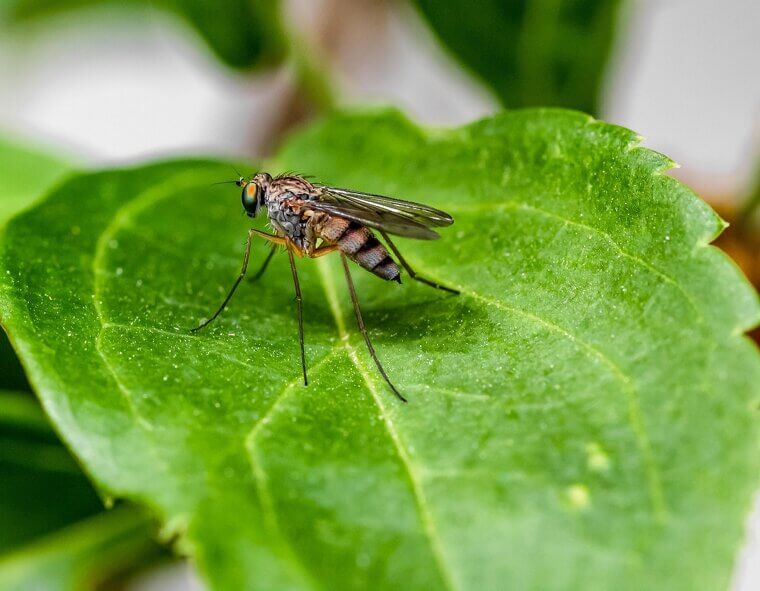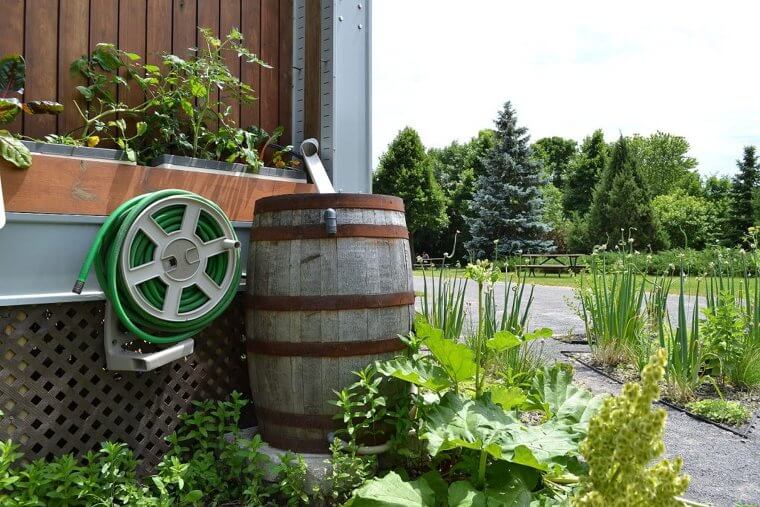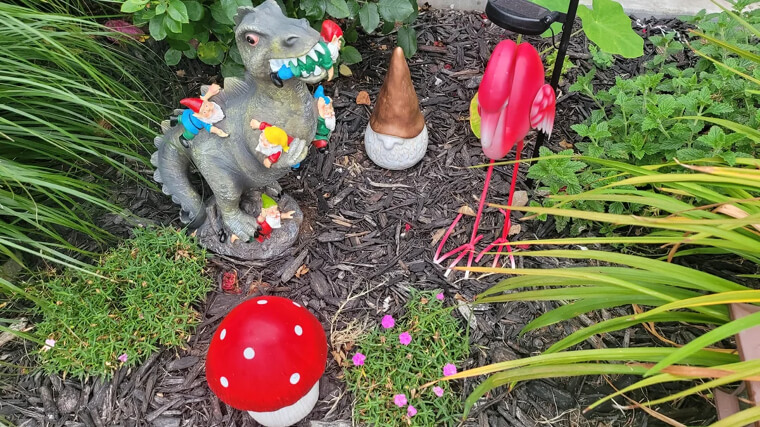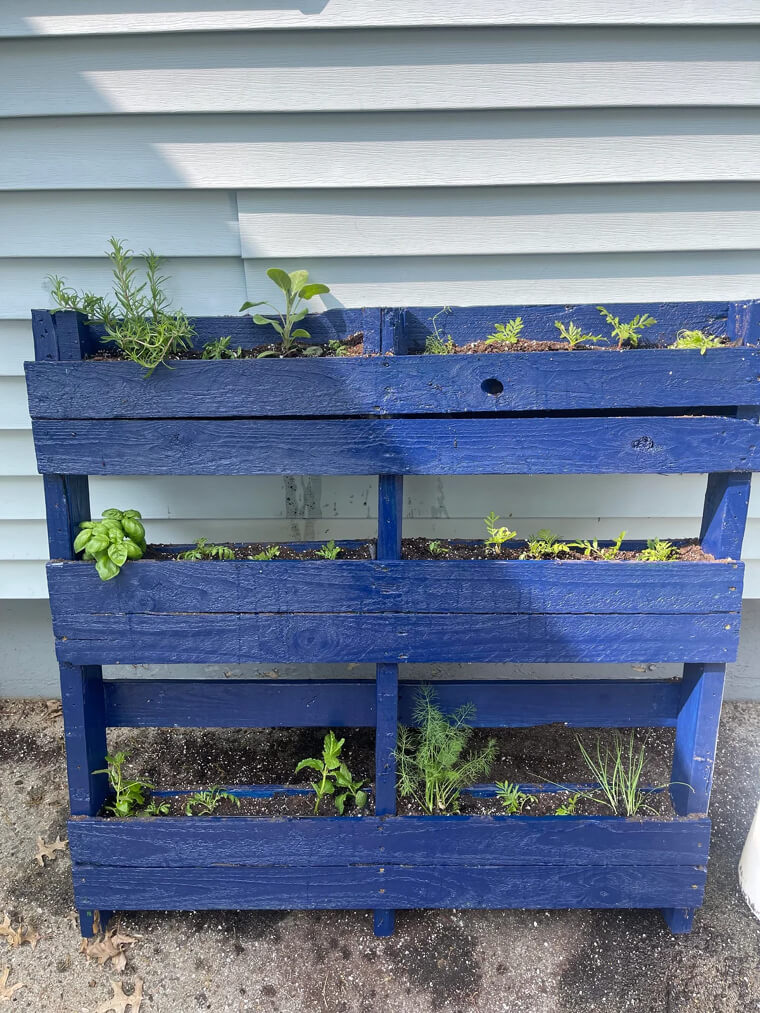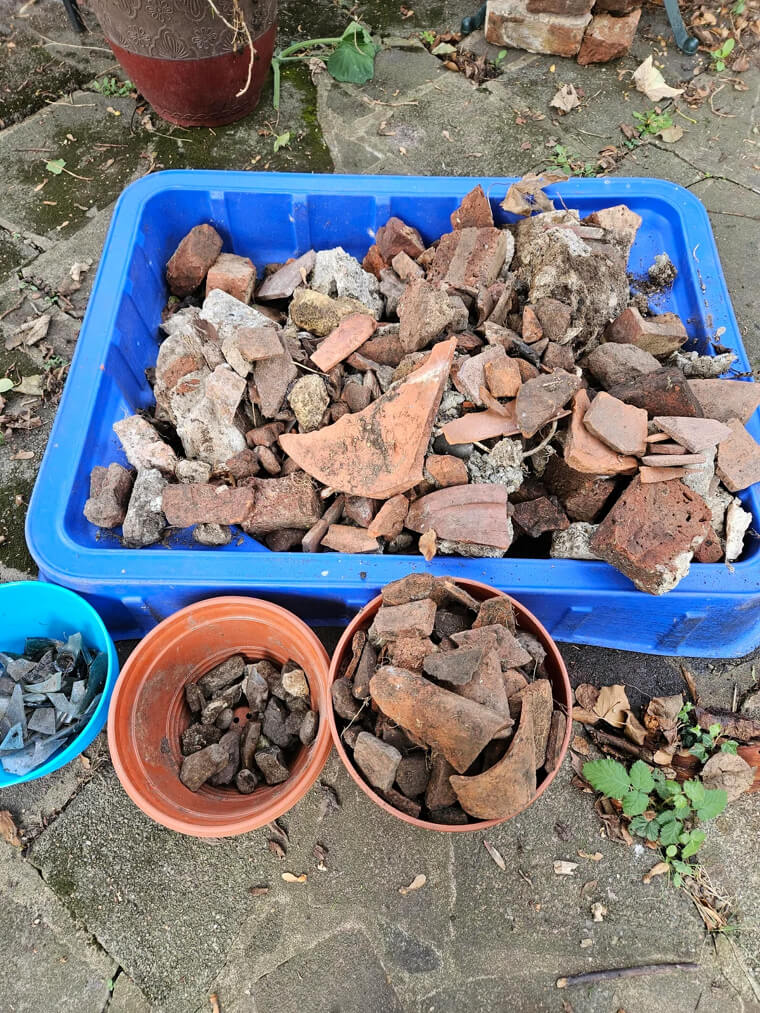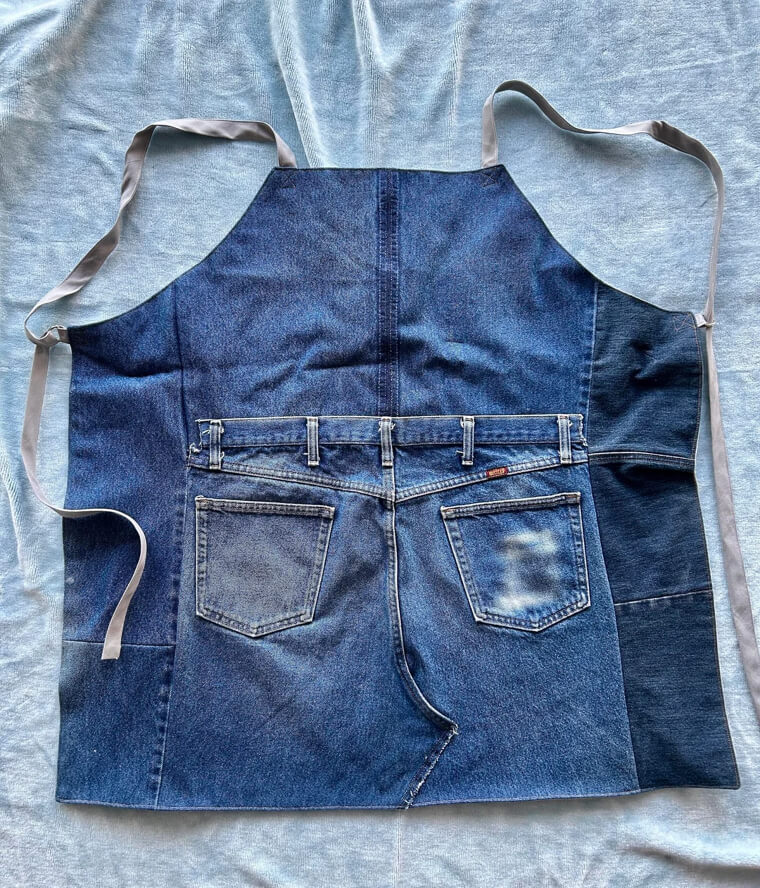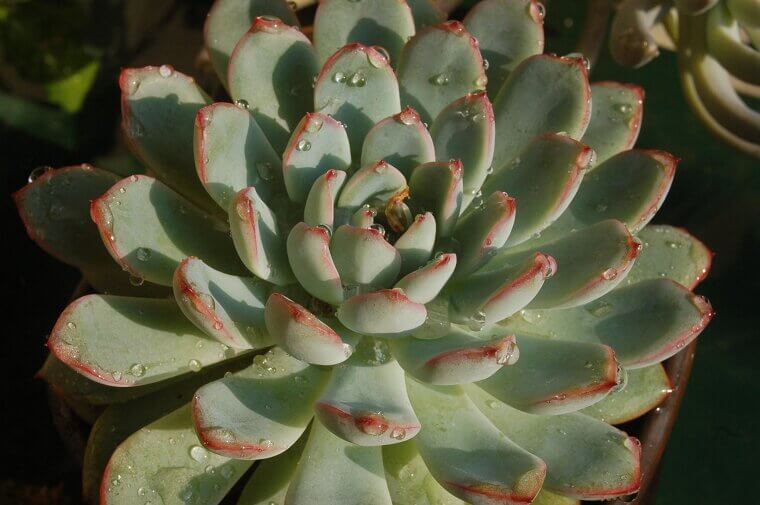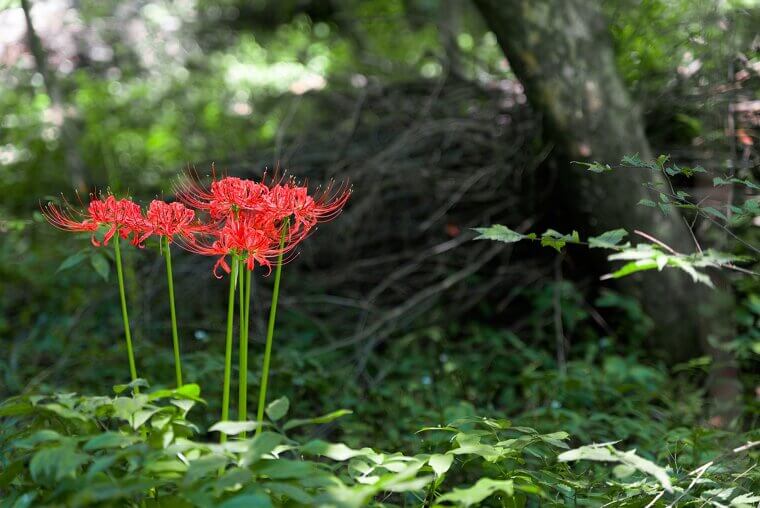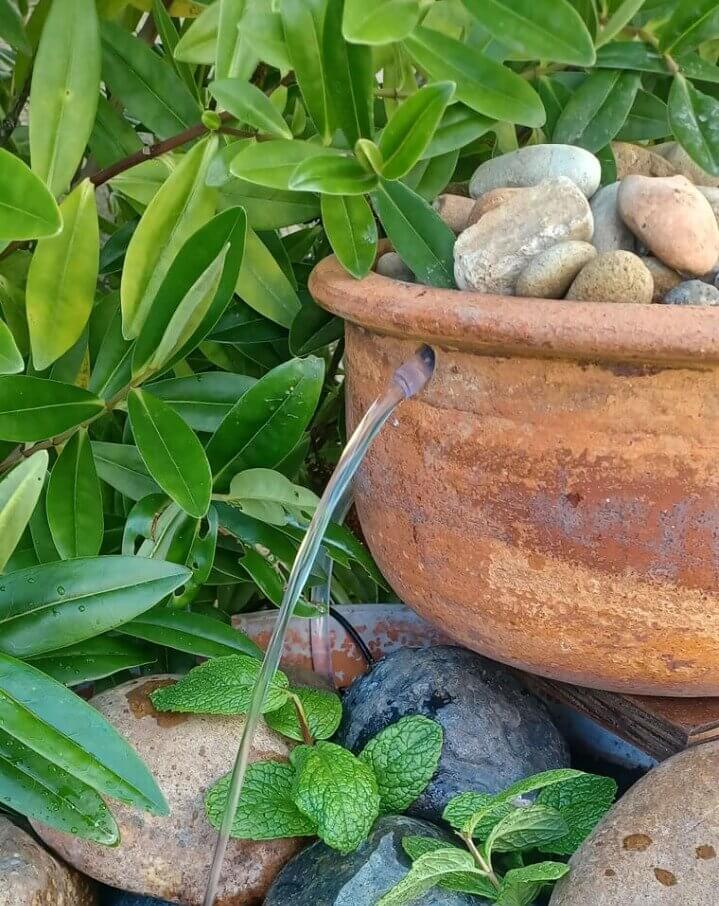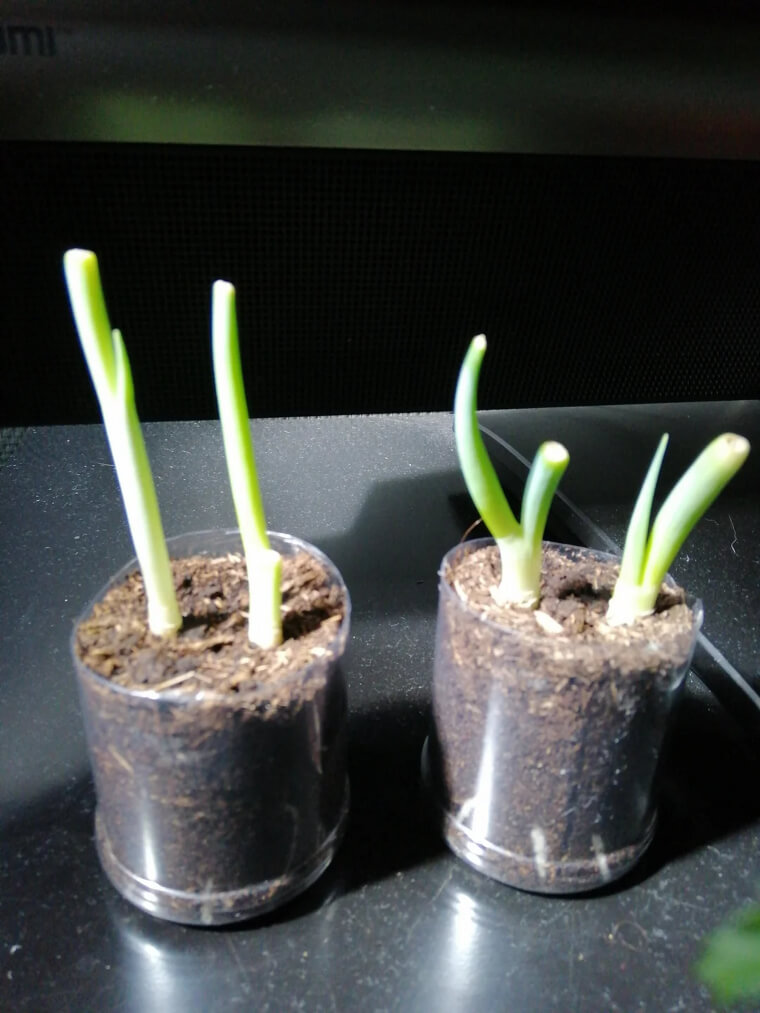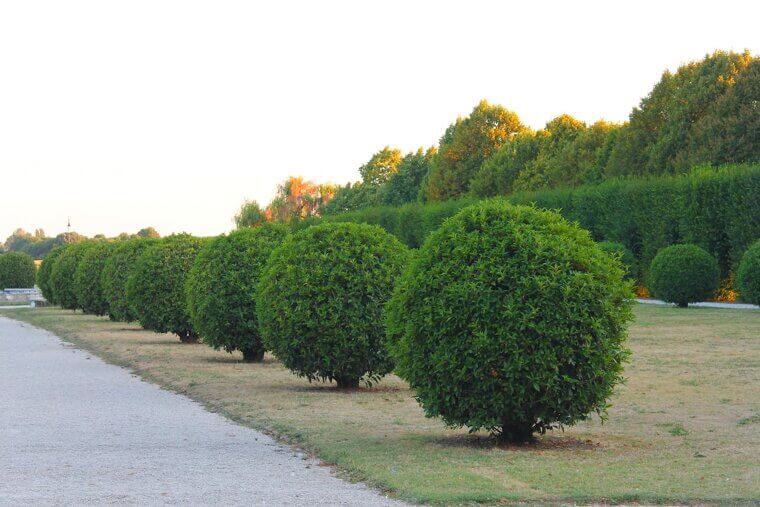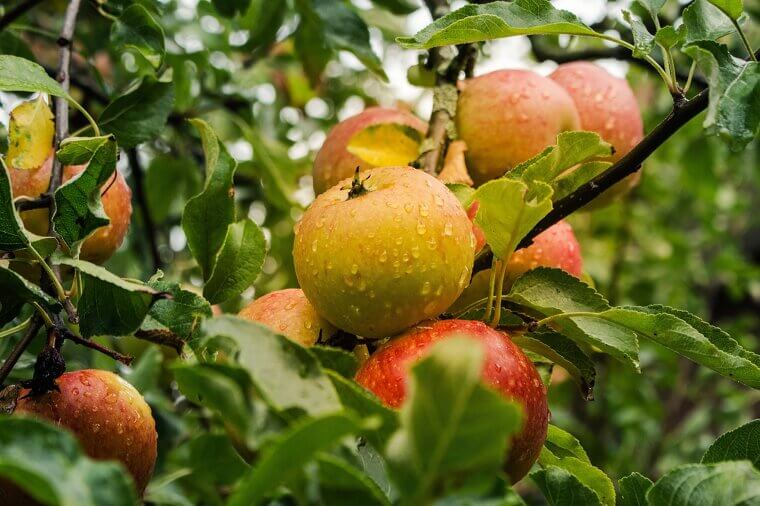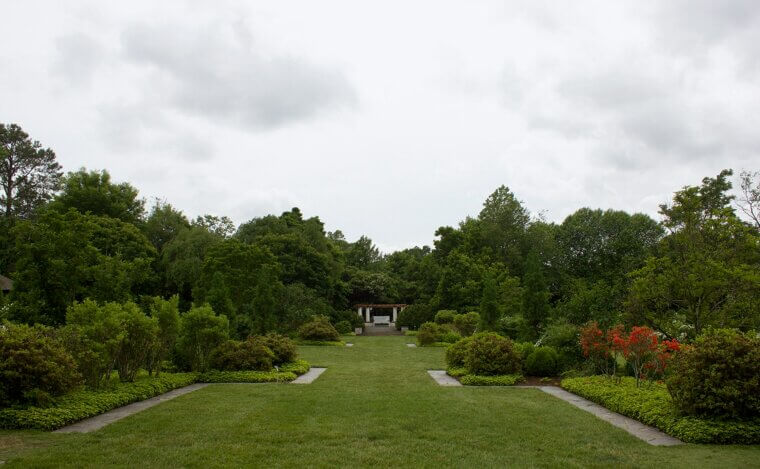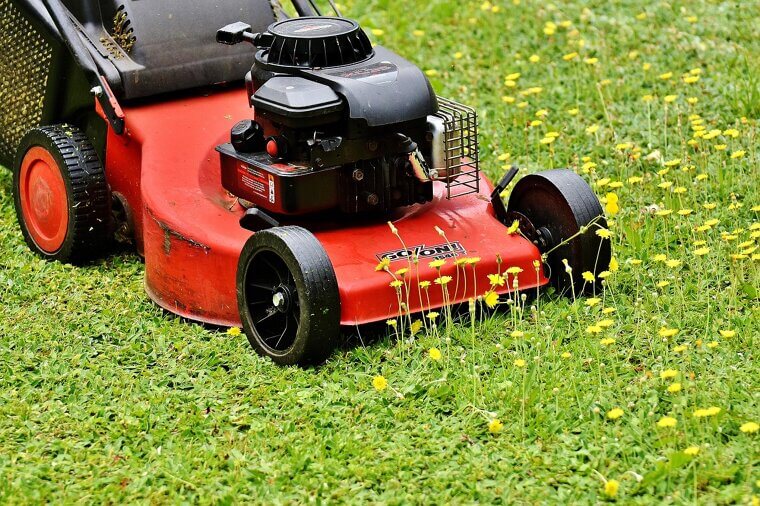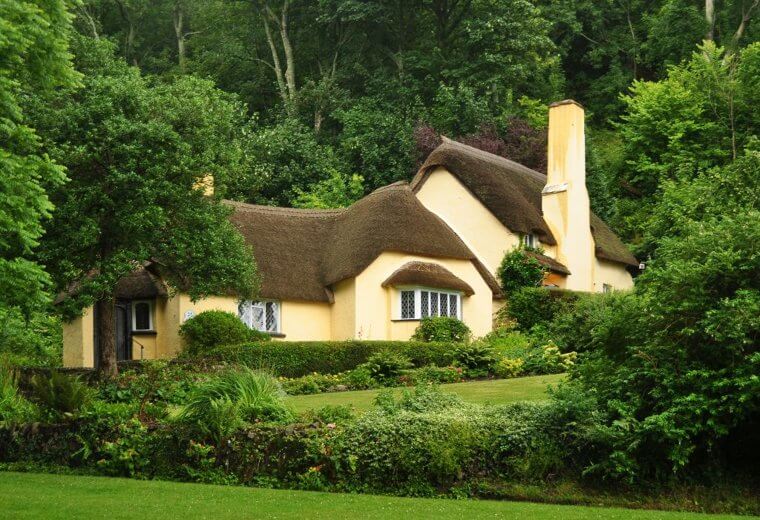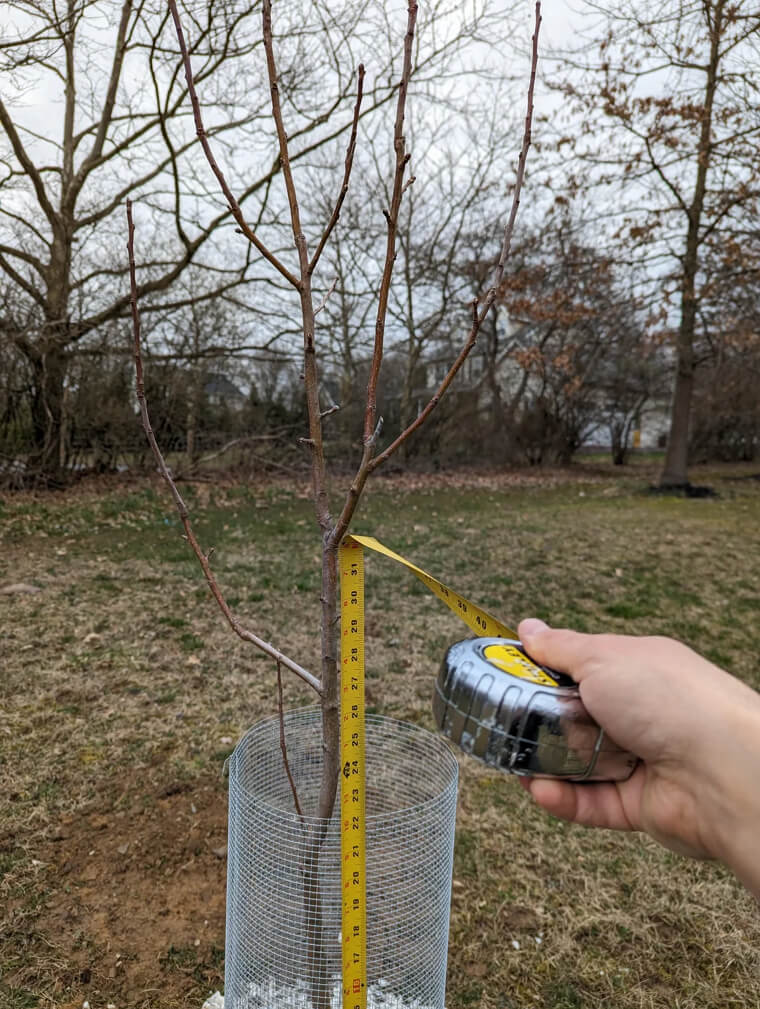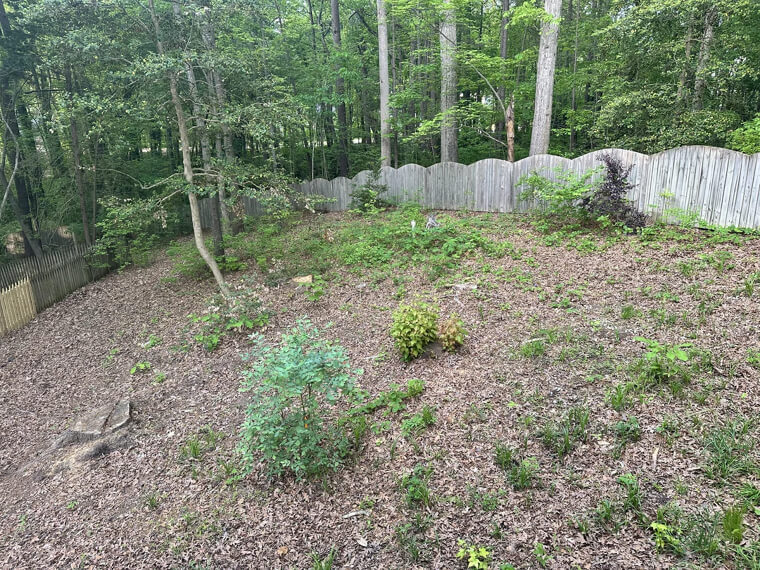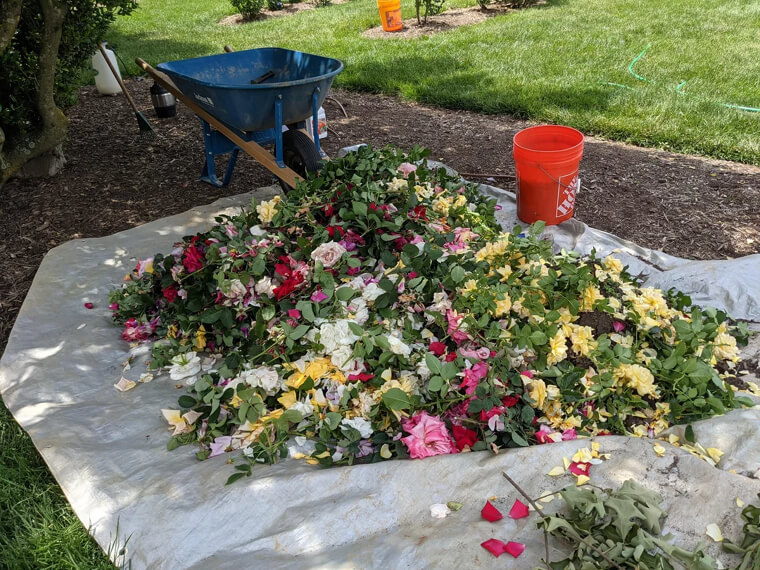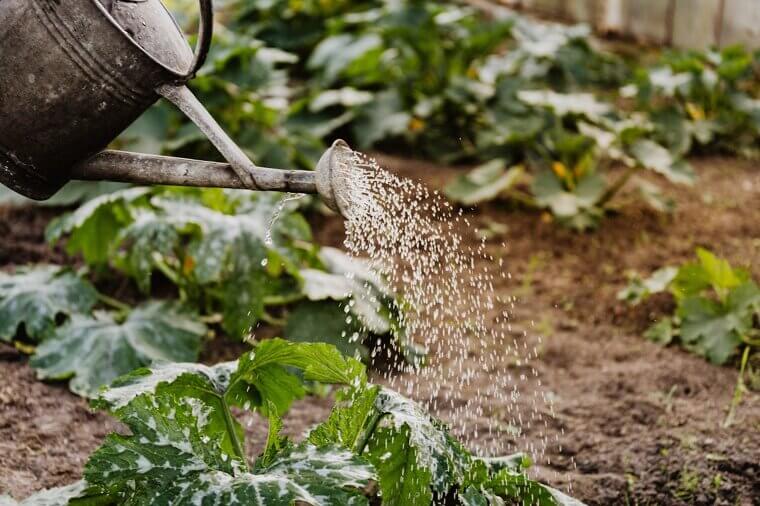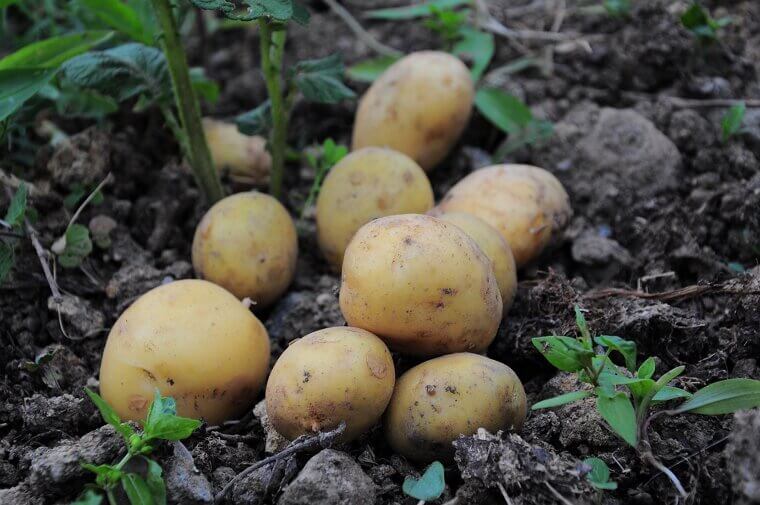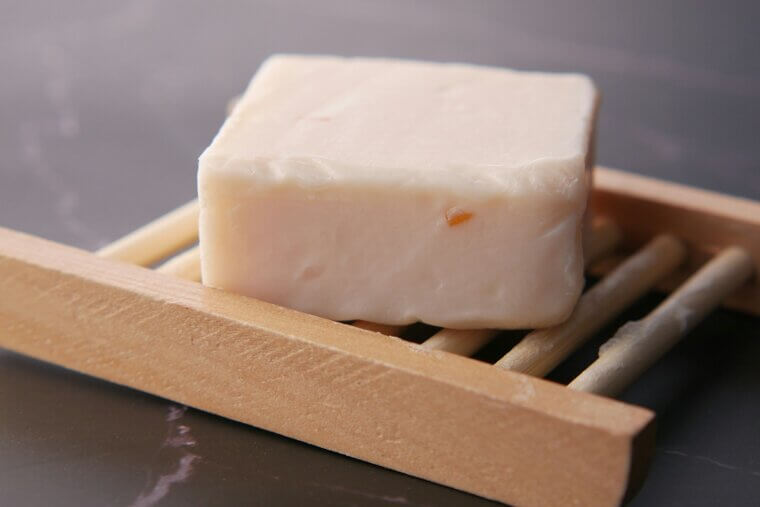Pretty in Pink
Did you know that with hydrangeas, you can actually change the color? Don’t get stuck with flowers that only come in one color when you can beautify your garden by turning them blue and purple too. Hydrangeas are nature’s perfect soil pH test.
If you make the soil basic, like with garden lime, you’ll grow pink hydrangeas. If you make the soil acidic with peat, you’ll grow blue hydrangeas. The intensity of the floral color will tell you how basic or acidic you made the soil and you can adjust to bring out the best in your flowers.
How to Grow New Plants From Your Kitchen Leftovers
Forget picking up seeds at the store. Creating full-grown plants from single vegetables is really easy, cheap, and actually a lot of fun. Everything anyone could need can be found right in their kitchen. For example, take a bell pepper, cut it in half, and scrape some of the seeds so that they fall into the hollow half of the bell pepper.
Then, fill it with soil, put the halved pepper in the ground, cover it, and keep it watered. Pretty soon, the plant should begin to sprout and, before long, it will grow its own peppers. Alternatively, the very same process can be done with a tomato. Just cut it horizontally and place those slices into the ground.
Use Newspaper To Stop Weed Growth
We have some good news for anyone who has been letting their crumpled old newspapers pile up in a corner of their home. Instead of letting all of that paper go to waste, take it outside to the garden and use it to fight against stubborn weeds.
Newspaper is the perfect DIY home gardening solution when it comes to stopping weeds in their tracks. Just lay out some sheets and layer some soil on top. The newspaper is thin enough to allow moisture to run through it during waterings, but it creates a barrier that keeps weeds from growing or spreading around the garden.
Turn A Plastic Bottle Into A Greenhouse
Having a home that includes a lush, beautiful greenhouse is a dream, but for those without that luxury, a simple water bottle will do. What's more, it's surprisingly easy. First, take a plastic bottle and cut the bottom off of it. Then, take some soil and place it right in the bottom piece of the bottle, along with the seeds or plant cuttings.
Next, water the plant and place the top half of the bottle over it. The result will be a tiny greenhouse that allows plants to get humid and comfortable. Stick the bottles right under a window, watch them grow, and replant them into the garden once they get big and strong enough for the great outdoors.
A Simple Way To Grow Green Onions Indoors
Who says that all gardening needs to happen outdoors? Even without any yard space, anyone can become their own farmer and grow their own produce without taking up much time or space. All someone needs to do is keep their green onion scraps after cooking.
When chopping up a green onion, make sure to keep the bottom white part of the vegetable where the roots are still attached. Next, take that bottom piece and stick it into a jar of shallow water, enough to cover the roots but not submerge the top of the cut vegetable. That's it! Just wait a few days, and new onions will start to grow from the top.
Create A Vertical Garden With A Shoe Organizers
Whether someone is living in a city without much outdoor space or they are trying to maximize their plant collection into one compact space, this hack is a game-changer. Exercise that green thumb in a smaller area by creating a vertical garden. All it takes is a hanging shoe organizer, some soil, seeds, and a bit of love.
Using shoe organizers can help produce an entire herb garden in even the smallest space. Poke a few holes in the bottom of each pocket so that water can properly drain and then fill each with soil. After that, either take seeds or a small plant and place it inside.
Use Corks For Simple Garden Markers
Calling all home gardening fans! Put down your hand-drawn maps of the herb garden and stop trying to guess which vegetable plant is which. Instead, make the process of herb and vegetable gardening that much easier just by creating these useful little garden labels.
The process could not be more simple. Collect a couple of old wine corks, and then gather some chopsticks, roasting sticks, or toothpicks. For each cork, write the name of a plant in the garden, attach it to a stick, and place it outside. Now any home gardener will have labels that are not only useful, but they also happen to look pretty cute, too.
Bury Plastic Pots To Keep Plants From Spreading
Mapping out the perfect backyard garden takes a lot of planning and plotting, trying to figure out which plant will end up where. But here is something that most people don't think to plan for: these plants grow, and some can spread out far and wide, overtaking other plants around them over time. So how does one make sure their garden plants stay in line?
Next time, try burying a plastic pot underground. Make sure it is just slightly larger than the pot of the plant that is going inside. This way, a gardener can bury their plant and its plastic casing right into the underground pot. It will keep the plant from rooting too far away, and allow a gardener to change out the plant if they ever decide to switch things up.
A Simple Watering Can For Home Gardening
Home gardening can easily be a family-friendly activity. At times when kids want to help out with watering duties, it's definitely necessary to have another watering can on hand. But what about the people who don't have one? Well, it turns out that all someone needs is a empty gallon jug and a knife.
Unscrew the plastic lid from the top of the gallon jug. Next, using a knife or a pair of scissors, poke a few holes in the top. For those in a pinch, burning a small hole in the plastic top works as well. Then, fill up the jug, place the cap on top, and voilà! It's an extra watering can.
Place Cardboard Under The Garden To Eliminate Weeds
Has anyone ever wondered what exactly goes into creating the perfect, weed-free garden? Well, some might be surprised to know exactly what goes into it. Believe it or not, the process often involves a layer of thick cardboard buried right under all of that soil.
After laying out a garden, cut apart a box to make single sheets of cardboard. After that, take those sheets, spread them out throughout the garden, and pile the mulch and soil on top. The cardboard will soak up water and help the plants around it, and it will also make it impossible for weeds to pierce through and create an eyesore.
Place Plastic Forks In A Garden To Scare Off Small Pests
We wish that propping up a scarecrow in our backyards would be enough to keep some of the smaller garden pests away. Unfortunately, it just does not work like that. But that doesn't mean there is no way to scare off squirrels, mice, and rabbits from snacking on all your hard work.
To counter this, collect a couple of plastic forks and bring them out to the garden. Place a few in the flower beds, pronged-side facing upwards. Keep them a bit spread out, but close enough to create somewhat of a barrier. While it might look a little like the garden is sprouting forks, this obstacle course will discourage rodents from eating away at a garden.
Save Kitchen Scraps For Garden Fertilizer
Just because someone does not have a composting container does not mean that they cannot benefit from adding their kitchen scraps to their gardening routine. Anyone can be an at-home compost master by just saving the things they would otherwise throw out, and adding them to their garden beds.
The best things to save up include eggshells, coffee grounds, banana peels, orange peels, potato peels, citrus rinds, leftover vegetable scraps, and even bread. Collect them over time (preferably outside since the process could get a little stinky), then bury them under the soil in the garden and watch the surrounding plants thrive.
Use Sponges Or Diapers To Fight Root Rot
Let's pour out some fertilizer for all of the plants who have gone to plant heaven. It turns out that the leading cause of death for potted plants is improper watering, usually in the form of over-watering. It seems that we just care for our plants too much and end up smothering them with our love.
So put down the watering can and, instead, pick up a sponge -- or even a diaper. Place that kitchen or baby product in the bottom of a pot before adding a plant. Both objects are known to soak up moisture and can end up saving a plant from too much water-based love.
Reuse Toilet Paper Rolls For Plant Seedlings
Here is an easy way to recycle while also helping form new plant life at the same time. Stop throwing out old paper towel or toilet paper rolls, and instead, put them to good use by using them to help germinate plant seeds for gardening.
Use toilet paper tubes or cut paper towel tubes into segments, and stuff the inside with gardening soil. Then, dip a finger in to create a space for seeds. Place the seeds inside and allow them to grow. Once they sprout, just put the entire tube into the ground in the garden. Over time, the tube will disintegrate and by that time the plant will be strong enough to grow without it.
Put Rose Cuttings In Potatoes And Watch Them Grow
In case everything in someone's garden is not coming up roses, there are some easy ways to change that and create an entire rose garden in a backyard by using something from your kitchen. But we bet that no one would have guessed that growing these roses involves burying a couple of potatoes.
This quirky trick is one of our favorites. Take a few roses from a bouquet and make cuttings out of healthy stems. Then take those cuttings and lodge them into a potato and bury the potato underground. While it might sound odd, the potato will create an environment that will keep the cuttings moist and allow roots to grow.
Make An Effective Weed Killer Without Harsh Chemicals
The weed killer that home gardening pros pick up at the store is definitely effective, sometimes even way too effective. While it might be a quick way to kill weeds, oftentimes it accidentally becomes a quick way to kill all of the flowers and plants around it as well.
Whether someone is sick of accidentally killing their plants, or they want a weed-killing alternative that does not involve all of those harsh chemicals, here is the perfect trick. Make a homemade weed killer that works wonders by combining a gallon of white vinegar, a cup of salt, and a tablespoon of dish soap. For best results, use the mixture when it is sunny.
Use Plastic Containers For The Perfect Plant Conditions
While plastic bottles are a commonly-used way to create a greenhouse at home, there are tons of other ways to recycle additional plastic products and use them in a garden. Even the lid of a plastic take-away container can help take a garden to the next level.
For those seedlings that a home gardener wants to protect from pests, or those stubborn seeds that need the perfect conditions, just put a clean plastic takeaway lid on top and bury the sides in a little bit of soil. This creates a barrier for pests while also allowing the plants to thrive in more humid, controlled conditions.
Don't Put Those Weed Nutrients To Waste
Weeds are a frustrating part of gardening, and removing those weeds is an even more irritating process. While anyone that is doing some home gardening might want to get those weeds out of their sight right away, it is actually best to hold on to them.
Next time anyone is weeding, take all of those weed scraps, place them in a bucket, and cover all of those greens with water. Over a few hours, the water will soak up all of the nutrients stored away in weeds that would otherwise go to waste. After waiting, take out and discard the soaked weeds, and use the leftover water to water the garden. See, weeds can help sometimes!
Use Coffee Filters In Plant Pots To Keep Soil In Place
Here is a trick that works for both indoor and outdoor plants. Watering our plant babies can be therapeutic, but there's nothing that ruins the experience more than showering a plant and ending up with wet dirt all over the place in the process.
That is usually because the drainage holes at the bottom of flower pots make it so that water can escape, but so can all of the loose soil. Unfortunately, plugging those holes can end up damaging a plant in the long run. Instead, when planting inside of a pot, lay a coffee filter at the bottom. This allows water to drain through, but will block soil from escaping.
Use A Muffin Tin For Easy Garden Spacing
Plants are like people; they need a little bit of space sometimes in order to grow. That is why it is important for anyone who is home gardening to make sure to space their plants properly. Not only does it help the plants grow larger, but it just so happens to be that much more aesthetically pleasing.
A plant spacing ruler can cost over $25 online. So instead of shelling out that cash, anyone who has a muffin tin at home can save that money by putting it to use in their back yard. Take the muffin tin and press it into the ground, then move it throughout the garden space to create small indentations. Place seeds in the middle of each circle for perfectly-spaced plant babies.
Sprinkle Some Soap In The Garden To Rid It Of Pests
Everyone loves a good garden. Unfortunately, by "everyone," we also mean all of those woodland critters, like the deer, rabbits, and squirrels, that live nearby. But there is a simple gardening hack that will keep someone's yard project from becoming an animal's late night meal.
It turns out that deer and other garden-based pests hate soap. Garden experts suggest taking a bar of soap and shredding it up, either in a food processor or manually using a cheese grater. Then, sprinkle that soap around the garden. The trick will keep deer away but won't harm any of the plants. Just remember to put out some more soap after a few days if the scraps wash away due to rain.
Add Salt To A Garden For Easy Fertilizer
Take a look at what happens to most store-bought fertilizers over time. In house plants, one might notice that after a while, some salt crystals begin to float to the top. That it because a lot of the fertilizers available in stores include some Epsom salt -- and herein lies a trick that anyone can also use at home.
If anyone is running low on fertilizer or just wants a natural alternative, try adding some salt to the mix. Either sprinkle a bit into a flower bed, or add up to a tablespoon of Epsom salt into a gallon of water and mix the solution together. If mixing the salt with water, pour it under the plant's base right where they meet the soil.
Use An Aluminum Can For Targeted Weed Spraying
When treating a garden with weed spray to try to eliminate those pesky weeds, there is not much standing between a healthy garden and disaster. But there is no need for all the anxiety! Instead, just grab a plastic bucket or an empty aluminum can and put them to use.
Either cut the bottom out of a plastic bucket, or clean out an old aluminum can and use a can opener to take off the top and the bottom. Place either device on top of a particularly weedy area and spray weed killer inside. This way, the spray will be focused around a specific spot, eliminating weeds along with calming your fear of killing the plants surrounding them.
Fill Large Pots With Plastic Bottles
Maybe a home gardener has a big pot that they want to use, but the plant that they want to put inside of it is too small. Or maybe someone just doesn't want all of their soil to go to waste in an oversized pot. For both of those conundrums, here's a helpful hack that is as simple as grabbing bottles from the recycling bin.
Take empty plastic bottles and stack up them up inside the bottom of that big pot. Then, go ahead and pour the soil on top. This way all of that soil will not go to waste, and the bottles at the bottom will create air pockets that will help avoid root rot in plants. Who knew plastic bottles could help save some gardening money and some plants at the same time?
Store Garden Tools In Sand To Save Then From Rust
While our garden plants might get a ton of attention, sometimes our garden tools, on the other hand, receive no love whatsoever. Over time, all those hours that they have been stored outside through rain or shine take a toll on them. But there is an easy way to save tools before it's too late.
First, mix a bag of sand with mineral oil -- for this, even baby oil works, since that is just mineral oil mixed with some fragrances. Once that is all mixed well, pour it into a bucket and place garden tools inside. This easy, at-home method will clean the tools and area also an easy way to store them in one space.
Keep The Insects Away With A Simple Homemade Spray
It's utterly disheartening to go outside hoping to pick herbs or vegetables for a meal only to find out that insects have feasted on those plants before anyone else ever got the chance. Keep the bugs at bay using a simple, natural, homemade insect spray that is safe for all plants and pets.
The recipe is pretty easy to make. All anyone needs is 1 head of garlic, 1.5 cups of mint leaves, 1 teaspoon of cayenne pepper, 6 cups of water, and a dash of dishwasher liquid. Put it all into a food processor and add the mixture to a spray bottle for a repellent that actually works!
Bottle Drip Feeder
Some plants prefer receiving their water from under the soil, instead of the top. If you’re walking around every day with a watering can, that can be a little challenging! Instead, use old soda or wine bottles to make DIY drip feeders for your precious plants.
Bury the bottle with a few extra holes in it when you settle in your plant and then refill the bottle every few days. This allows for a slow drip into the inner parts of the soil, letting the plant’s roots suck up the moisture they need.
Get Some Tweets
What’s the word, hummingbird? Did you hear about the crafty DIYers who made their own bird feeders from old or broken items around their homes? That’s right, you can grab anything from an old pair of sneakers to teacups and turn it into a pretty bird feeder. Anything can look cute with the right decorations.
Be wary if you’ve planted berries or other things that birds like to eat though. If you’re growing delicious-looking strawberries, birds might rather eat them than your nice birdseed so your mileage may vary. This can also be a great activity to do with kids!
Attract the Butterflies
Butterflies and bees are the only bugs we really love to see playing in the flowers, right? Well, why not use a spare mason jar or ceramic bowl to build a simple butterfly feeder? With just a few things kicking around the house, you can make a feeder that will bring all the butterflies to the yard.
You can make sugar water that they’ll love and use a sponge to distribute it for their tiny mouths. Just remember to hang the feeder high enough that you won’t attract ants or your garden will have a big problem!
Homemade Garden Stones
It’s okay, we don’t think that we could identify every plant under the sun. That’s why gardeners invented signs. But don’t spend your money buying flimsy signs to plant in your garden! Grab some river rocks or stones you have lying around, get out your paints, and put that creativity to good use. You can paint the fruit or veggie or just the name in bright colors and arrange the stones as you see fit.
Bonus: if you grow strawberries, painting some of the stones red and scattering them around will fool birds and deter them from eating your budding berries.
Sweeten Tomatoes With Baking Soda
Plenty of gardeners swear by their homegrown tomatoes and for good reason. Store-bought tomatoes often lack the juicy freshness you can get with a ripe tomato hanging from your vine. Plus, nothing can replace that pride of growing something you can feast on. But, if you want your tomatoes to be even better, we recommend breaking out the baking soda.
Sprinkle it around the soil when you plant the tomatoes and again while they grow to counteract the acidity and grow sweeter tomatoes.
In a Bind? Use a Rind!
This might sound a little silly, but if you have some new seedlings that you want to grow indoors but forgot to pick up a pot, you can use a citrus rind. One blogger accidentally discovered that their seedling did well in a lemon rind, but you could also use oranges, grapefruits, or limes for the same effect.
Just remember to throw away your peel when you transfer the seedling to a pot or the ground so that it doesn’t leach up too much acidity.
Strawberry Tower Forever
Strawberries just want to hang out! Give them the gift of height with a strawberry tower and give yourself the gift of more space to walk around. If you want to have sweet, succulent strawberries but don’t have a big garden to house them, they won’t mind. Just gently push the plants to grow outward and stack the plastic pots on top of each other.
Don’t stack them too high though or you’ll end up with the leaning tower of strawberry!
Repel Mosquitos With Herbal Power
Mosquitos can be a real pain in the @$$! Not to mention the bad diseases they often carry. Keep those suckers out of your beautiful garden by planting any one of the numerous herbs that mosquitos hate.
Most people have heard of citronella, but you can also try: Lemongrass, Catnip, Thyme, Lemon balm, Marigolds, Basil, Lavender, Peppermint, Garlic, and Rosemary. The moral of the story is that you should always try to find natural remedies for keeping pests away before you reach for the spray bottle.
Love Rain On Me
Rain barrels are easy to use and fantastic for locales with high water prices. Want to lower that water bill and get back to nature? Grab a rain barrel. They may not work so well in arid climates, but if you live somewhere that sees a decent amount of rain, why not collect some of that excess water so that your plants can drink their fill every day?
Then, when the hotter days of the week roll around, simply utilize your collected rain and save yourself some serious money. We guarantee, it adds up fast!
Not Your Garden Variety Upcycling
If you find yourself constantly worrying about all of your recycling, we’d like to recommend trying something different. Go to your local arts and crafts store and pick up some inexpensive materials like twine, googly eyes, feathers, sequins, plastic gems, and a lot of glue.
The next time you need to recycle a wine bottle, or something else plastic, why not try turning it into a fun animal to populate your garden? There are plenty of everyday objects that can become a furry or feathered friend with a little bit of creativity.
Pallet Planter
Don’t you hate it when you order heavy furniture and it comes on a pallet? You just know that the movers aren’t going to take those darn things away and you’ll be stuck cleaning up the mess. But, what if we told you that pallets can actually make lovely planters?
They’re especially great if you don’t have a lot of room in your garden and want to take your plants skywards, rather than being all spread out. Praise the sun!
Don’t Cry Over Spilt Pots
If your favorite planting pot gets knocked over by a careless raccoon, or your own self (we promise not to tell), don’t worry. You won’t have to throw anything away. Instead carefully gather up the shards, using protective gloves since they’re sharp, and crafting a faerie garden.
Unleash your creativity with glitter, paints, plastic jewels, pipe cleaners, whatever you want. The sky’s the limit! Glue the pieces inside and replant smaller things around to show off what you’ve done. Just ensure that whatever you use to decorate the broken pot and its pieces is waterproof since it’ll be outside.
Garden In Style
If you’re the type of person who finds themselves really getting down and dirty in the garden, you probably need an easily washable garden apron. Instead of spending money on buying something nice from the store that you’re just going to cover in the dirt, why not use an old pair of jeans?
We recommend using a pair that have already seen their fair share of days frolicking in the mud, but any pair will do. Just remember to grab your scissors and you’ll have everything you need.
Keep the Leaves
Succulents are one of the few types of plants that can actually regrow from just their leaves. That’s right; no seeds involved! If you notice that one of your succulents isn’t doing so well, carefully harvest a few leaves and replant them elsewhere.
With a little bit of care and water, your succulents can take root in a new pot or area. Hopefully, they’ll have an easier time in the second place. If so, you can start your own beautiful desert oasis with succulents galore!
Made in the Shade
It’s important to know when and where you should grow your little vegetable garden. That being said, there are plenty of aspiring gardeners who just don’t live in places with lots of sunlight all year long. If you’re lacking light, do some research into vegetables and flowers that were made for the shade.
We recommend trying out some veggies like carrots, potatoes, spinach, onions, scallions, and kale. Most of those vegetables grow under the soil and don’t need a lot of sunlight anyway, but there are plenty of flowers that would enjoy less light too.
Pint-Sized Water
Installing a ceramic water fountain in your garden can cost you a significant chunk of money, so why not save those dollars and make your own? We promise it doesn’t take an expert gardener! Just use some ceramic pots that you buy at a home and garden store, drill some holes into them, and insert a pipe.
Once you have the pipe, you can add small river rocks or mosaic glass pieces to give your fountain a sparkling look. Just imagine how nice it would be to listen to the relaxing sounds of burbling water while you’re out weeding.
Endless Onions
Before you get too excited, keep in mind that this hack is for growing onion greens, not the actual bulbs. With that in mind, let’s get a little weird.
Take a large plastic bottle, cut the neck off, and plant small onion bulbs with soil inside. As the bulbs grow, they’ll start producing greens which will grow out of the small holes you put throughout the bottle. Just keep it watered and sitting pretty in your kitchen window and you’re good to go!
Chill Out In... A Tree?!
This tip is for advanced gardeners only. If you’ve been looking for a fun and creative way to spruce up your garden then look no further! Fun-loving gardeners everywhere have been showing their creative prowess by carefully shaping trees, bushes, and squashes into living furniture like couches, chairs, small enclosures, and even sweeping structures.
Living structures have the benefit of looking exotic and not actually needing as much care and upkeep as you’d think. In many cases, there are methods of attaching trellises or other guides or scaffolding to guide the plants into your desired shapes.
A Good Apple
Here’s a fun fact: did you know that if you’re growing red apples and they haven’t turned red yet that you can stencil a fun design on the side? Just put on a sticker in your preferred shape and the apple will mature into its normal red shade while the bit under the sticker will stay green.
You can make your apples really stand out from the crowd with fun butterfly or heart-shaped designs on the side. Whether you’re selling apples to your neighbors or using them as a fun decoration, everyone will take notice of your innovative apples.
Silver Linings
Did you know that cloudy days were made for gardening? It’s true: On sunny days that dry out your soil, you run the risk of cracking the roots of your plants when you transfer or replant them. When roots crack, they’re unable to suck up nutrients or moisture out of the soil and act like dead weight to the plant.
Additionally, cloudy days, before the sun finishes rising, or near the sunset are great times to water your plants since the sun won’t be able to evaporate all of the water before your plants can take a good long drink.
After the Rain
If you’re waiting for a cloudy day to transfer your plants, you should consider waiting until it’s raining. We’re not saying you need to be out in your gardening during the storm, but right after, when it’s still damp and muddy, is the best time to move plants.
Remember what we said about cracking roots before? Well, think of how happy your plants will be when they’re laid in fresh soil that’s already saturated with moisture. It’s like extra water to help jump-start their new growth.
No Buzzcuts!
Everyone has a different look for their lawn, but if you’ve been thinking about applying a close shave, we recommend that you think again. Grass is a fairly resistant plant, but it isn’t impervious. When you cut the grass shorter than two inches tall, you run the risk of damaging the plant and making it harder for it to grow back.
Perfect! You say, thinking you’ll never have to trim the lawn again. Well, unfortunately, you’re also sending out an invitation to weeds in the area that it’s open season on your grass. If you’re a perfectionist about your lawn then you should leave it a few inches to stop other plants from horning in.
Save Money, Plant a Shrubbery
If you’re a fan of Monty Python, then the chances are high that you know all about the power of the shrubbery. For everyone else, though, it can actually be a great way to save some money on insulation. Plenty of older homes don’t have much, if any, insulation which means you’re in for hot summers and cold winters.
If you strategically surround your house with shrubs and bushes, though, you can save by not constantly running the A/C or the heat and still keep your house at a reasonable temperature. Plus, you get to see whatever cute flowers bloom on your bushes in the springtime. It’s a win-win!
Prune Those Trees
It can be hard to know when the right time to prune your plants is. If you prune a plant while it’s blooming, you can cause some serious damage by interrupting the pollination cycle. For trees that have flowers, the best time is actually right after they finish blooming.
After blooming, the trees have finished pollinating, and you won’t be harming their next lifecycle or their ability to fruit. However, if you’re planning to harvest fruit from the trees, you’ll want to skip the pruning entirely since fruiting structures form after they bloom and you might accidentally prune them away.
Clear Out the Undergrowth
You’re not living in a jungle! Clearing out the undergrowth isn’t just for aesthetic reasons; it’s beneficial for your plants too. While it’s true that natural forests have plenty of dead and rotting plants fertilizing the soil, your plants don’t work the same way.
Excessive undergrowth is a major fire hazard and something that should be avoided. Plus, as the plants rot, they can actually become poisonous for other plants in the area who were just minding their own business!
Deadhead!
No, we’re not talking about fans of the Grateful Dead. In gardening, deadheading is the process of removing flowers after they have finished blooming. You’ll know that a flower has finished when it starts to wilt or shed its petals.
When you deadhead your flowering plants, you encourage the plants to grow new ones. As long as the heads remain, the plant doesn’t know whether they’re still blossoming or not. The whole point of having them is that you want a beautiful blooming garden, right?
Occasional Drinks
This is true for all plants, but especially succulents. Watering your plants briefly every day is actually less nourishing than watering them periodically and giving them more water. Typically, you can water your plants once or twice a week as long as you give them plenty to drink.
This might not work as well with more sensitive plants or during the heat of the summer, but watering your plants about an inch will give them ample time to suck the moisture out of the soil and facilitate proper drainage too.
When Depth Matters
If you plant bulbs like potatoes, you should always ensure that you plant them deep enough to give them room to grow. A good rule of thumb is to bury the bulb twice or three times as deep as the bulb is long. Or, in the case of root vegetables, as long as they will be.
Bulb plants have especially long-reaching roots to support their above-ground and below-ground growth. They aren’t at the same level as trees, but they need more room than they’re usually given in gardening boxes.
Soap’s Up!
This is a fantastic gardening hack for all of you ladies with lovely nails. If you gently run your fingernails over a bar of soap before you head outside to give your plants some tender, loving care, you’ll seal your nails from the dirt.
As anyone with long nails knows, it is super annoying to spend a few minutes pulling up weeds in the garden and then have to spend another ten minutes at the sink trying to wedge something under your nails to clean out the gunk.

